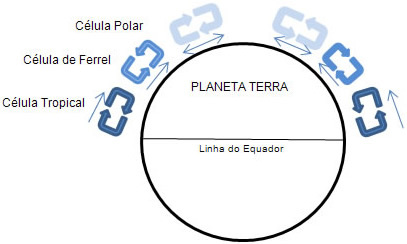Until the year 1978, Iran was an ally of the United States. Your ruler, the Shah Reza Pahlavi, had a series of military agreements with the North Americans and the country had, at the end of the 1970s, one of the ten largest military arsenals in the world. Several US transnational companies have established themselves in Iran, in different segments, but focusing on the production chain of Petroleum. The Persian country even became the main supplier of oil for Israel, being that nowadaysboth countries share huge hostilities.
the Iranian Revolution
In contrast to this policy of unrestricted support for the United States, in mid-1978, a popular rebellion led by religious leaders, in particular by the Ayatollah Khomeini (who lived in exile in Paris), by the National Front founded by former prime minister Mohamed Mossadegh, by the Marxist Tudeh party and by the political-military organizations of the fedahin (nationalists) and of the mujahedin (Fundamentalist religious fighters).
Without resisting popular pressure, the shah left the country in January 1979. On February 11 of the same year, the last representative of the monarchy fell, with the
Deposition of Prime Minister Shapour Bakhtiar and the rebel takeover of the Imperial Palace. The armed forces retreated to avoid being annihilated by the insurrection and joined the new regime, which eliminated its dome, but preserved the essential part of its structure. A period of internal power struggles began.Prime Minister Mehdi Bazargan of the National Front tried to develop a policy of conciliation between the demands of Islamic tradition and an advanced development model with participation popular. However, it did not get the support of the revolutionary, repressed and politically marginalized left, as well as the Islamic integralists.
Do not stop now... There's more after the advertising ;)
Break with the United States
In November 1979, as the government seemed close to ratifying its anti-imperialist positions, a student group occupied the US embassy and took its employees hostage, finding documents that proved CIA intervention - United States Central Intelligence Agency - in the country.
Bazargan resigned and a new constitution was passed in a plebiscite and, in January 1980, the progressive economist was elected president. Abolhassan Bani-Sadr. This, however, was not supported by the parliament elected two months later, where conservative nationalists from Islamic Revolutionary Party (PRI) were the majority (a situation that remains today). The internal struggle that was already beginning to involve Khomeini's own succession as the country's spiritual conductor, paralyzed the process of change that had begun with the overthrow of the shah. From now on, United States and Iran have broken diplomatic ties. In 2013, newly elected Iranian President Hassan Rowhani was the first Iranian leader of the post-Islamic Revolution era to establish direct diplomatic contacts with a President of the United States.
In addition to the distance between Iran and the Western world, the Iranian political crisis ended up interfering in the oil production of the country, an important member of the OPEC, a cartel that brings together some of the world's leading oil producers. This fact associated with the beginning of Iran-Iraq War was responsible for the call 2nd Oil Crisis, which made the price of a barrel of oil reach US$ 100.00 for the first time in history, a quotation very close to current values.
Julio César Lázaro da Silva
Brazil School Collaborator
Graduated in Geography from Universidade Estadual Paulista - UNESP
Master in Human Geography from Universidade Estadual Paulista - UNESP
Would you like to reference this text in a school or academic work? Look:
SILVA, Julius César Lázaro da. "The Political Transformations in Iran and the Islamic Revolution"; Brazil School. Available in: https://brasilescola.uol.com.br/geografia/as-transformacoes-politicas-no-ira-revolucao-islamica.htm. Accessed on June 27, 2021.

